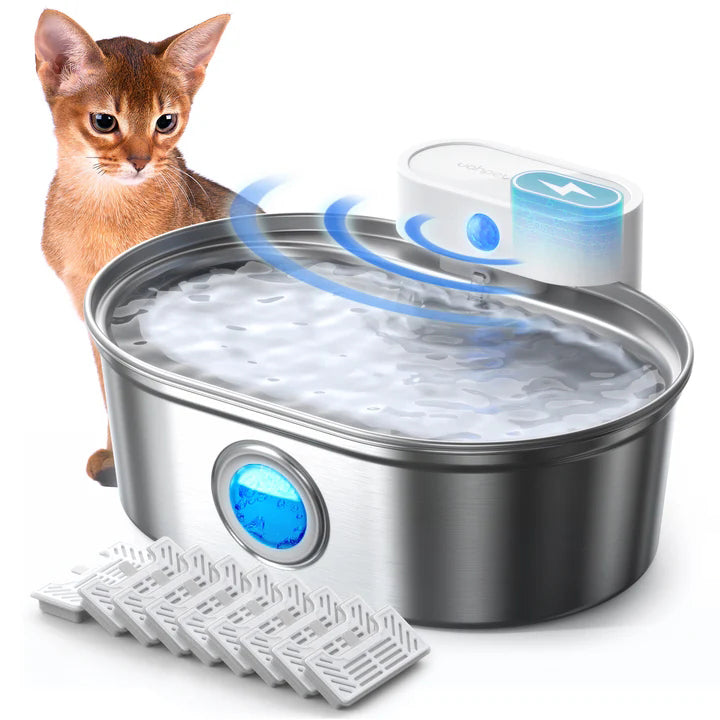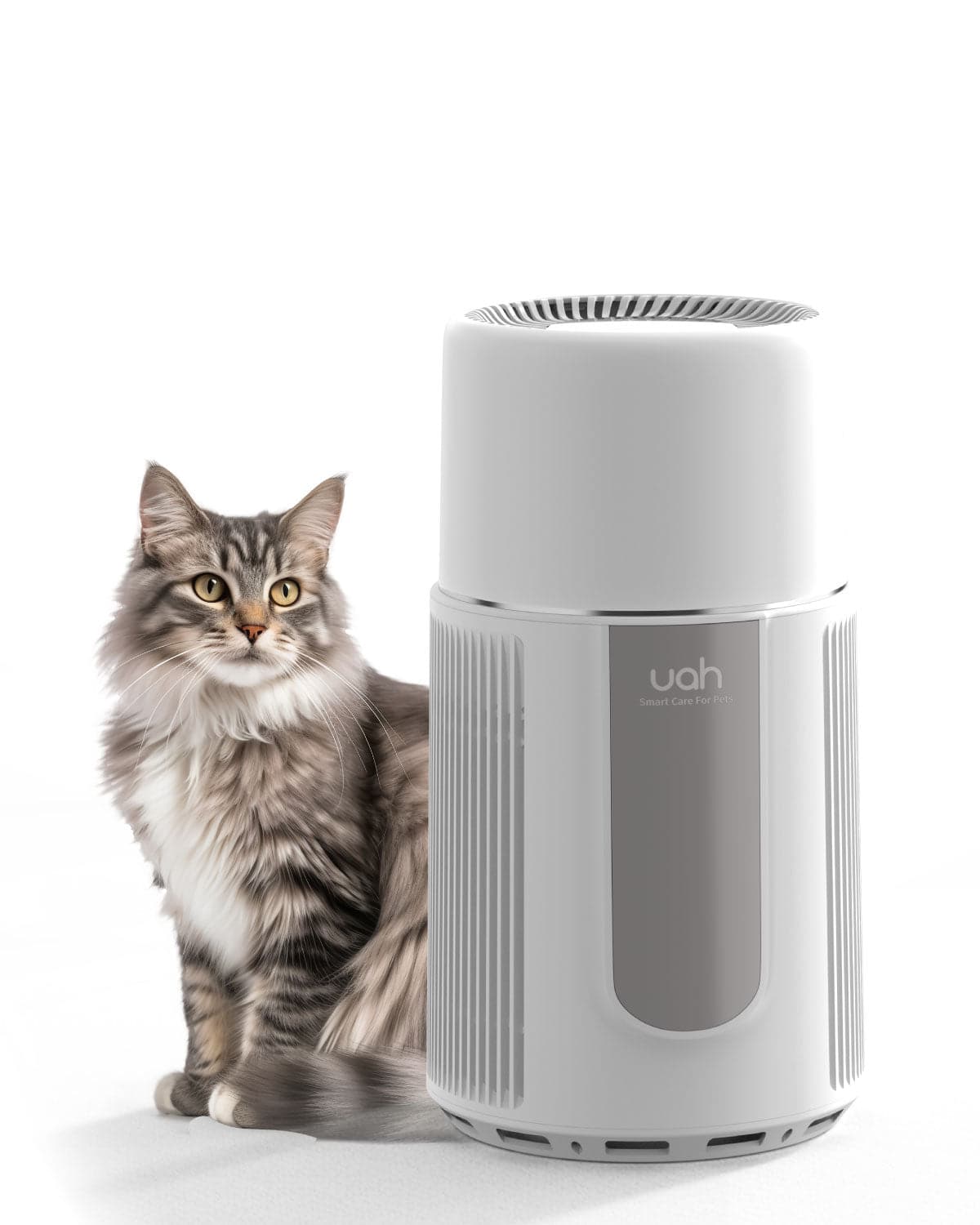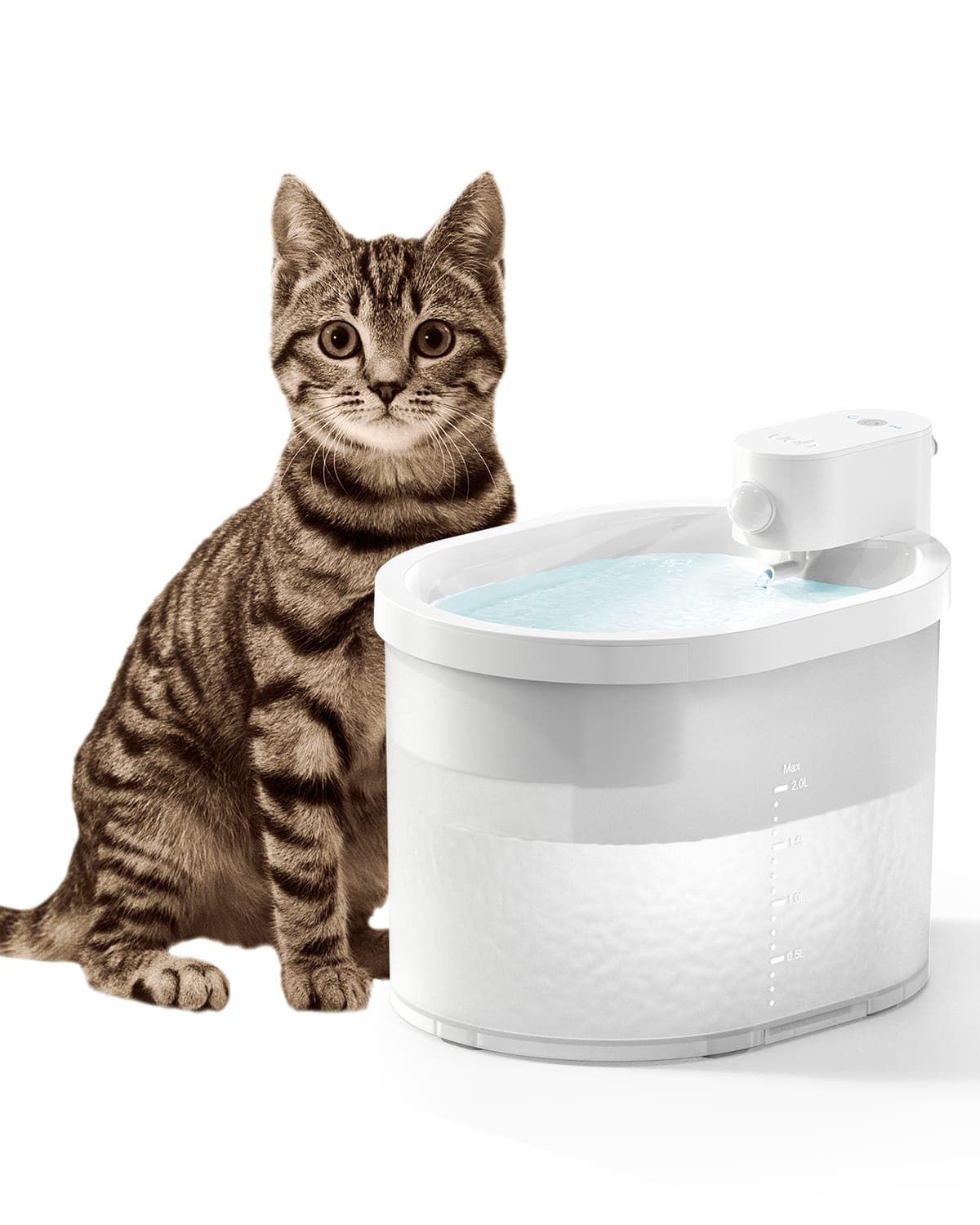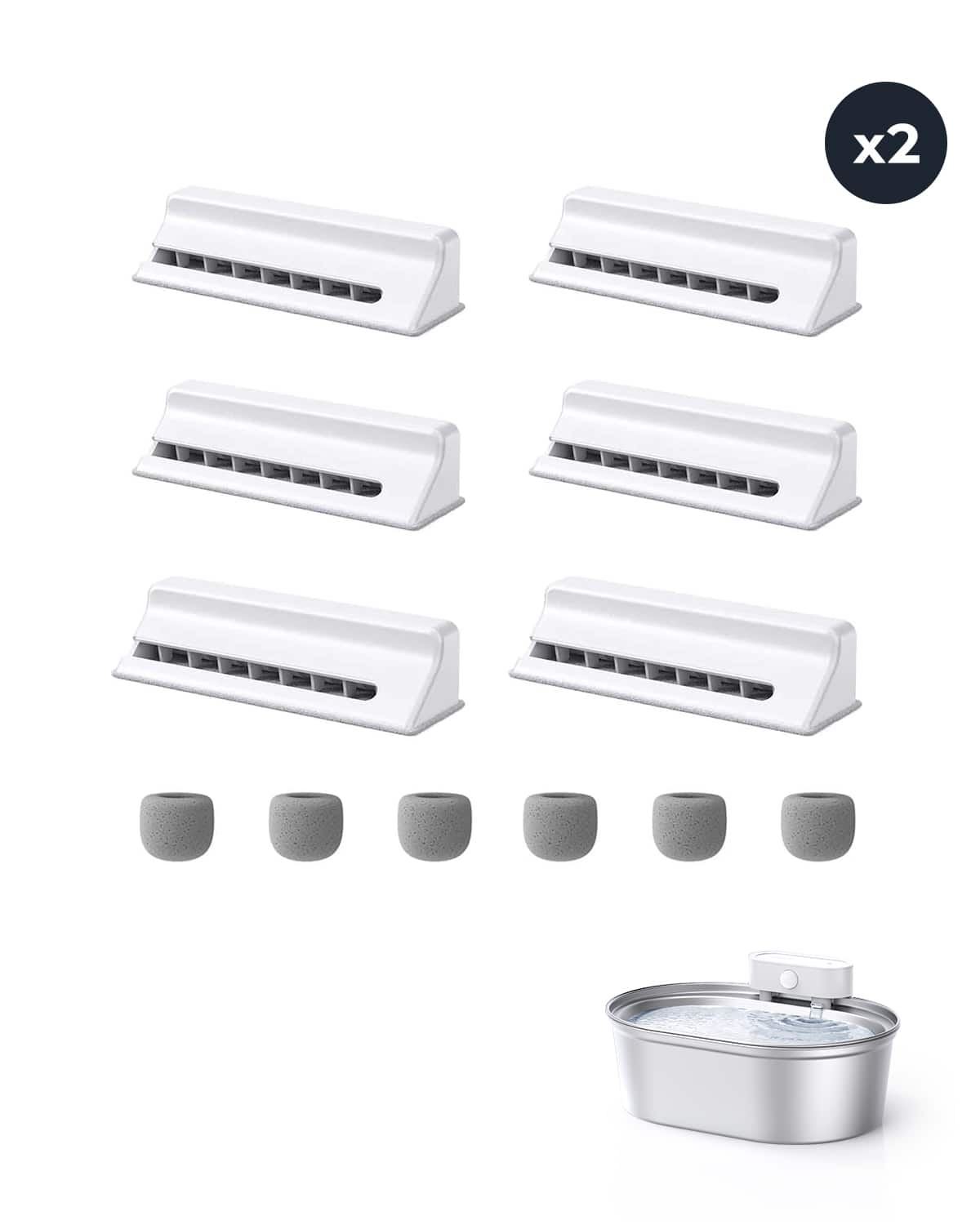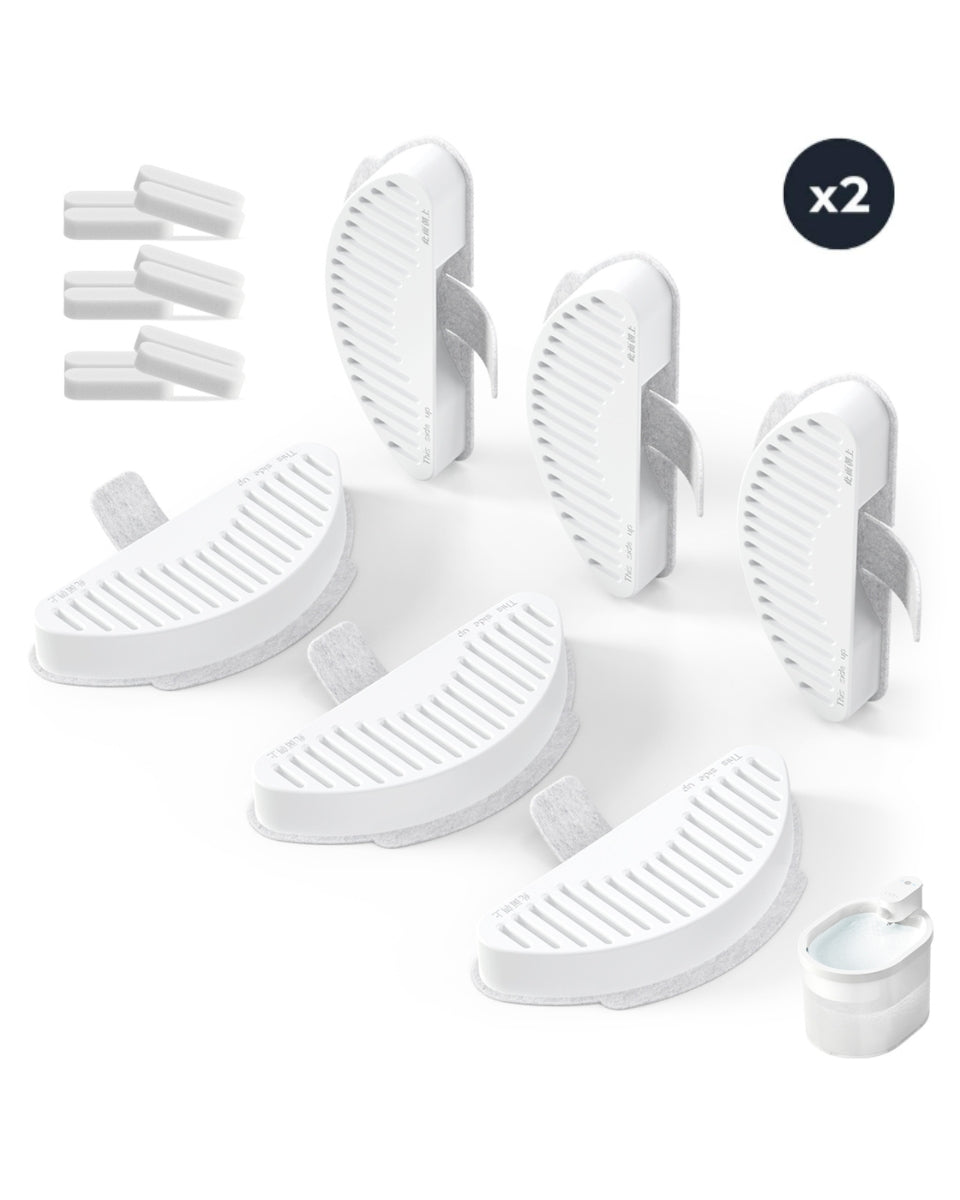Living with pets brings immense joy, but it also comes with challenges, especially when it comes to maintaining clean air in your home. Pet dander, hair, and odors can significantly impact indoor air quality, making it essential to invest in the best air purifier for a house with pets. This guide will walk you through everything you need to know to make an informed decision and ensure a healthier living environment for both you and your pets.
Why You Need an Air Purifier for a House with Pets
Pets are beloved members of the family, but they can also be a source of allergens and pollutants. Pet dander, which consists of tiny flakes of skin, is a common allergen that can trigger respiratory issues and allergies. Additionally, pet hair and fur can accumulate in your home, contributing to dust and airborne particles. Odors from litter boxes, pet beds, and accidents can also linger, making the air less pleasant to breathe.
An air purifier designed for homes with pets can effectively capture and remove these pollutants, improving indoor air quality. By reducing allergens and odors, an air purifier can create a more comfortable and healthier environment for both you and your pets.
Key Features to Look for in an Air Purifier for Pets
When choosing the best air purifier for a house with pets, there are several key features to consider:
- HEPA Filter: High-Efficiency Particulate Air (HEPA) filters are essential for capturing pet dander, hair, and other airborne particles. Look for an air purifier with a true HEPA filter that can capture particles as small as 0.3 microns.
- Activated Carbon Filter: An activated carbon filter is effective at neutralizing odors, including those from pets. This type of filter can help eliminate unpleasant smells and keep your home smelling fresh.
- Air Change Rate: The air change rate refers to how many times the air purifier can filter the entire volume of air in a room per hour. A higher air change rate means more efficient purification, especially in larger spaces.
- Noise Level: Consider the noise level of the air purifier, especially if you plan to use it in bedrooms or other quiet areas. Look for a model with a quiet operation mode to ensure it doesn't disturb you or your pets.
- Coverage Area: Make sure the air purifier is suitable for the size of the room or area where you plan to use it. Check the manufacturer's specifications for the recommended coverage area.
- Ease of Maintenance: Regular maintenance, such as replacing filters, is essential for optimal performance. Choose an air purifier with easy-to-replace filters and clear maintenance instructions.
Benefits of Using an Air Purifier in a House with Pets
Investing in the best air purifier for a house with pets offers numerous benefits:
- Reduced Allergens: By capturing pet dander and other allergens, an air purifier can help reduce allergy symptoms and improve respiratory health.
- Improved Air Quality: An air purifier can remove airborne particles, such as dust, pollen, and pet hair, leading to cleaner and fresher air.
- Odor Elimination: Activated carbon filters can neutralize pet odors, making your home more pleasant and inviting.
- Healthier Environment: Cleaner air can contribute to a healthier living environment for both you and your pets, reducing the risk of respiratory issues and other health problems.
- Peace of Mind: Knowing that your home's air is being effectively purified can provide peace of mind and enhance your overall well-being.
Tips for Maintaining Your Air Purifier
To ensure your air purifier continues to perform at its best, follow these maintenance tips:
- Regular Filter Replacement: Replace the HEPA and activated carbon filters according to the manufacturer's recommendations. Regular filter replacement is crucial for maintaining optimal performance.
- Clean the Exterior: Wipe down the exterior of the air purifier regularly to remove dust and dirt. This helps keep the unit clean and functioning properly.
- Check for Blockages: Ensure that the air intake and exhaust vents are free from obstructions. Blockages can reduce the efficiency of the air purifier.
- Monitor Air Quality: Use an air quality monitor to track the effectiveness of your air purifier. This can help you determine when it's time to replace filters or adjust settings.
- Follow Manufacturer's Instructions: Always follow the manufacturer's guidelines for use and maintenance to ensure the longevity and performance of your air purifier.
Common Misconceptions About Air Purifiers for Pets
There are several misconceptions about air purifiers for pets that can lead to confusion when making a purchase decision. Here are some common myths debunked:
- Myth 1: Air Purifiers Eliminate the Need for Cleaning: While air purifiers can significantly improve air quality, they are not a substitute for regular cleaning. Vacuuming, dusting, and washing pet bedding are still essential for maintaining a clean home.
- Myth 2: All Air Purifiers Are the Same: Not all air purifiers are created equal. It's important to choose a model with the right features, such as a HEPA filter and activated carbon filter, to effectively address pet-related pollutants.
- Myth 3: Air Purifiers Are Noisy and Disruptive: Many modern air purifiers are designed to operate quietly, especially in low or sleep modes. Look for models with low noise levels to avoid disruption.
- Myth 4: Air Purifiers Are Expensive to Maintain: While there is a cost associated with replacing filters, the benefits of improved air quality often outweigh the maintenance expenses. Additionally, some models have washable or reusable filters that can reduce long-term costs.
- Myth 5: Air Purifiers Are Only for People with Allergies: Air purifiers can benefit everyone, not just those with allergies. They help create a cleaner and healthier living environment for all household members, including pets.
How to Choose the Right Air Purifier for Your Home
Selecting the best air purifier for a house with pets involves considering your specific needs and preferences. Here are some steps to help you make the right choice:
- Assess Your Needs: Determine the primary reasons for needing an air purifier, such as reducing allergens, eliminating odors, or improving overall air quality.
- Consider Room Size: Measure the size of the room or area where you plan to use the air purifier. Choose a model with a coverage area that matches or exceeds the size of your space.
- Evaluate Features: Look for essential features like a HEPA filter, activated carbon filter, and a high air change rate. Consider additional features such as quiet operation, air quality sensors, and ease of maintenance.
- Read Reviews: Research and read reviews from other pet owners to get insights into the performance and reliability of different air purifiers.
- Set a Budget: Determine your budget and look for air purifiers that offer the best value within your price range. Keep in mind that higher-priced models may offer additional features and better performance.
- Check Warranty and Support: Look for air purifiers with a warranty and reliable customer support. This can provide peace of mind and assistance if you encounter any issues.
Frequently Asked Questions About Air Purifiers for Pets
Here are some common questions and answers about air purifiers for homes with pets:
-
Q: Can an air purifier completely eliminate pet odors?
A: While an air purifier with an activated carbon filter can significantly reduce pet odors, it may not completely eliminate them. Regular cleaning and proper pet care are also important for odor control. -
Q: How often should I replace the filters in my air purifier?
A: The frequency of filter replacement depends on the model and usage. Generally, HEPA filters should be replaced every 6 to 12 months, while activated carbon filters may need replacement every 3 to 6 months. Check the manufacturer's recommendations for specific guidelines. -
Q: Can I use an air purifier in multiple rooms?
A: Some air purifiers are portable and can be moved between rooms, while others are designed for use in a specific area. Consider your needs and choose a model that fits your lifestyle. -
Q: Are air purifiers safe for pets?
A: Yes, air purifiers are safe for pets when used according to the manufacturer's instructions. Ensure that the air purifier is placed in a location where your pets cannot interfere with its operation. -
Q: Do air purifiers consume a lot of energy?
A: Most air purifiers are energy-efficient and consume relatively little power. Look for models with energy-saving features or certifications to minimize energy consumption.
Choosing the best air purifier for a house with pets is a crucial step toward creating a healthier and more comfortable living environment. By understanding the key features, benefits, and maintenance tips, you can make an informed decision that meets your needs. Don't wait any longer—take the first step toward cleaner air and a happier home for you and your pets today!


